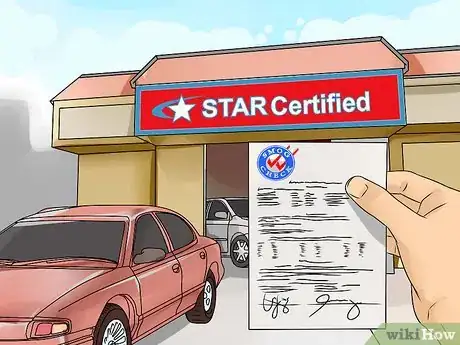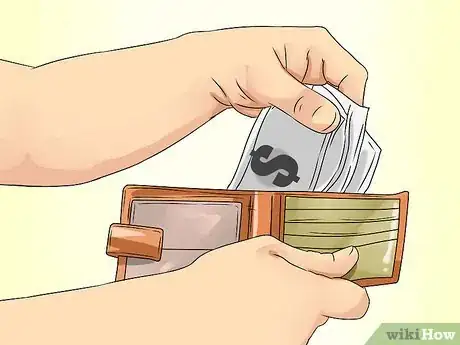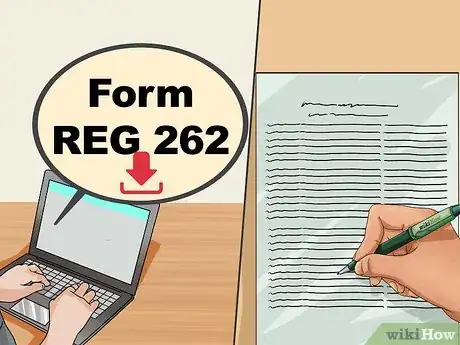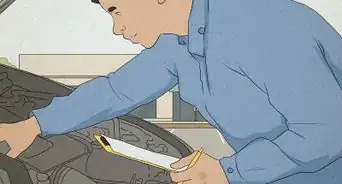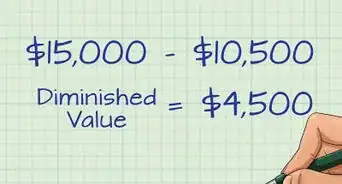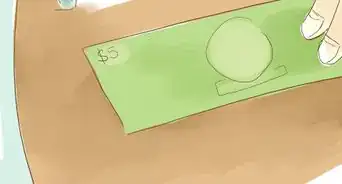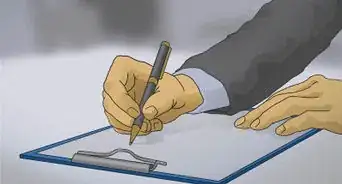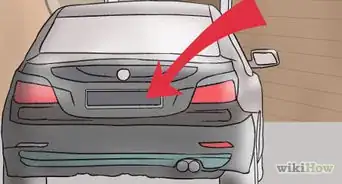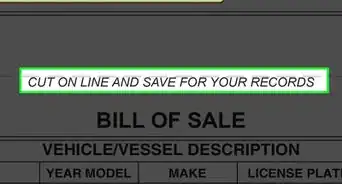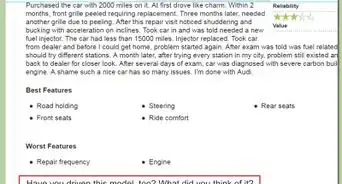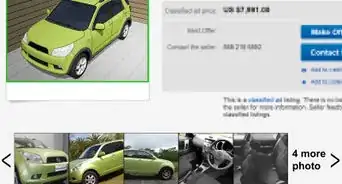wikiHow is a “wiki,” similar to Wikipedia, which means that many of our articles are co-written by multiple authors. To create this article, 15 people, some anonymous, worked to edit and improve it over time.
There are 11 references cited in this article, which can be found at the bottom of the page.
This article has been viewed 227,236 times.
Learn more...
If you're like most people, the last thing you probably want to do when you're ready to sell your car is wade through miles of red tape. While the paperwork and bureaucracy surrounding car sales can be intimidating, with proper preparation, the process doesn't need to be a headache. Learn your way around the documentation required in California so you can get to what really matters — selling your car.
Steps
Gathering What You Need
-
1Get the official DMV transfer forms. When a car changes ownership in California (whether by being sold or by being inherited, given as a gift, etc.), the DMV considers this a "transfer." The DMV uses certain forms to document transfers. You'll need official copies of the following forms to legally complete the sale:[1]
- California Application for Duplicate Title Form REG 227. You can download and print this form online here.[2] If you have your original title, you can just use that; you don't need a duplicate title form.
- Vehicle/Vessel Transfer and Reassignment Form REG 262. This form isn't available online because it is printed on special security paper. To get it, you need to call the DMV at 1-800-777-0133 and request to have a copy mailed to you.[3] If you do not need to disclose the odometer reading (car older than 10 years), you may download and print a Bill of Sale REG 135 (PDF) form or a Power of Attorney REG 260 (PDF) form.
-
2Be prepared to provide smog certification if your car isn't exempt. Selling many cars requires up-to-date certification from a STAR smog test station. You can search for STAR stations near you here.[4] Smog certifications are valid for 90 days — you must complete the sale within this time or get re-tested. Note, however, that many cars do not need smog certification when sold. Cars that do not need to be tested include:[5]
- "Hybrid" cars
- Cars that run on diesel
- Cars that run on electricity
- Cars that run on natural gas
- Cars less than four years old
- Cars made before 1975
Advertisement -
3Be prepared to have your car inspected. The vast majority of consumer guides recommend buyers to have the car they plan to purchase inspected by a licensed technician before exchanging any money for it.[6] It is typically the buyer's responsibility to pay for the inspection or perform it personally. However, it's still your car at this point, so you may need to work out an arrangement to accommodate the buyer's request.[7] Consider getting a mobile inspection service to inspect the car on your property if you don't want to go to the trouble of taking it to a mechanic.
- Be sure to keep all documentation from the inspection — especially if the mechanic finds an issue that may be cause for concern.
-
4Be prepared to pay a few minor fees. Depending on the specifics of your situation, the fees you and the buyer may need to pay can vary. The fees you owe are determined when the transfer application is submitted to the DMV. These may include, but are not limited to:[8]
-
5Obtain miscellaneous forms under certain special circumstances. For most car sales, the forms above will be sufficient. However, some situations call for extra documentation. See below:[12]
- If you are selling a commercial vehicle, you may need Declaration of Gross Vehicle Weight/Combined Gross Vehicle Weight Form Form REG 4008.
- If you are selling to a family member, you need Statement of Facts Form REG 256.
- If your car is under a lien, you will need the lienholder's release notarized. Note also that there are sections on the transfer forms above for the lienholder to sign.
- If your name is misspelled or printed in error on your car title, you will need Statement of Error or Erasure REG 101 (available here).[13]
- If your car is missing a license plate, registration stickers, or other important documentation, you will need Application for Replacement Plates, Stickers, Documents Form REG 156 (available here).[14]
Making the Sale
-
1Fill out all required forms. Download the Original California Certificate of Title Video and print the forms in the section above that you need. Call the DMV to request Form REG 262, making sure to allow enough time for it to arrive in the mail.
- If your car is under a lien, this is a good time to get the lienholder's release (as well as his or her signature on the transfer forms).
-
2Review and sign the forms with the buyer. This is your chance to clarify any misunderstandings and work out any differences of opinion. The most important thing to review and agree on is the price of the sale (documented on REG 227), but it's a good idea to go over all of the documents together to ensure total agreement.
- In addition to completing the forms together, you will also need to sign your car's title to confirm that you release ownership of it.
-
3Don't forget to disclose the odometer reading. Because the number of miles a car has traveled can affect its monetary value, this information is critical. Be sure to record the odometer reading on REG 262 and the title and make sure the buyer sees and understands the reading. Falsifying this information, failing to disclose it, or tampering with the odometer is a crime. However, you don't need to do this if the vehicle is 10 years old or more.[15]
-
4Submit all forms to the DMV. When you and your buyer have reviewed all of the paperwork, give it to an associate at the DMV. Your transfer request will be registered and logged in the official records.
-
5Report the transfer to the DMV. As the seller, you have five days to report the transfer. Luckily, you can do this online here, or at the DMV when you submit your paperwork.[16] You will need the car's license plate number, the last five digits of the VIN, and the new owner's name and address.
- The buyer must also report the transfer of the car. However, s/he has 10 days.
Community Q&A
-
QuestionWhat are the rules for letting them test drive?
 Community AnswerI don't know about what the law says (if anything), but generally, I ask them for their keys and driver's license before allowing a test drive.
Community AnswerI don't know about what the law says (if anything), but generally, I ask them for their keys and driver's license before allowing a test drive. -
QuestionWho pays for the smog test: the seller or the buyer?
 Community AnswerThe general rule of thumb is the seller gets the smog test done prior to selling the car. The document is good for 90 days in California.
Community AnswerThe general rule of thumb is the seller gets the smog test done prior to selling the car. The document is good for 90 days in California. -
QuestionHow is the tax paid if I sell my car to an individual?
 Community AnswerThe bank or DMV will calculate taxes due when the buyer pays for the car's registration. You do not need to worry about the taxes as the seller.
Community AnswerThe bank or DMV will calculate taxes due when the buyer pays for the car's registration. You do not need to worry about the taxes as the seller.
References
- ↑ https://www.dmv.ca.gov/portal/dmv/?1dmy&urile=wcm:path:/dmv_content_en/dmv/pubs/brochures/howto/htvr32
- ↑ https://www.dmv.ca.gov/portal/file/application-for-duplicate-or-transfer-of-title-reg-227-pdf/
- ↑ https://www.dmv.ca.gov/portal/dmv/detail/forms/reg/reg262
- ↑ http://www.smogcheck.ca.gov/
- ↑ https://www.dmv.ca.gov/portal/dmv/?1dmy&urile=wcm:path:/dmv_content_en/dmv/pubs/brochures/howto/htvr32
- ↑ http://www.consumer-action.org/english/articles/california_car_buyers_bill_of_rights
- ↑ https://blog.ebaymotorssucks.com/internet-car-buying-and-selling-tips/
- ↑ https://www.dmv.ca.gov/portal/dmv/?1dmy&urile=wcm:path:/dmv_content_en/dmv/pubs/brochures/howto/htvr32
- ↑ http://www.dmv.org/ca-california/title-transfers.php
- ↑ http://www.dmv.org/ca-california/title-transfers.php
- ↑ http://www.dmv.org/ca-california/title-transfers.php
- ↑ https://www.dmv.ca.gov/portal/dmv/?1dmy&urile=wcm:path:/dmv_content_en/dmv/pubs/brochures/howto/htvr32
- ↑ https://www.dmv.ca.gov/portal/file/statement-to-record-ownership-reg-101-pdf/
- ↑ https://www.dmv.ca.gov/portal/file/application-for-replacement-plates-stickers-documents-reg-156-pdf/
- ↑ https://dmv.ca.gov/portal/dmv/?1dmy&urile=wcm:path:/dmv_content_en/dmv/vr/vr_info#BM2520
- ↑ https://dmv.ca.gov/portal/dmv/detail/online/nrl/welcome
- ↑ https://dmv.ca.gov/portal/dmv/?1dmy&urile=wcm:path:/dmv_content_en/dmv/vr/vr_info#BM2520
About This Article
To sell a car in California, start by contacting the DMV to request a vehicle transfer form, which they will send you through the mail. If you don’t have a title for your car, also request a duplicate title request form. Then, take your car to be smog tested, since you will need an up-to-date certification to sell it. Next, fill in the forms with the buyer and sign them before submitting the forms to the DMV. For tips on how to have any liens released from your vehicle before you sell it, read on!

